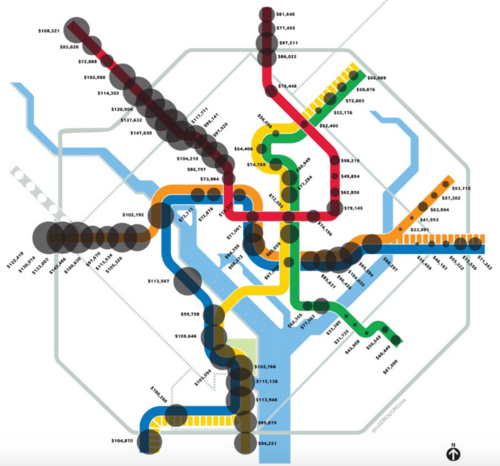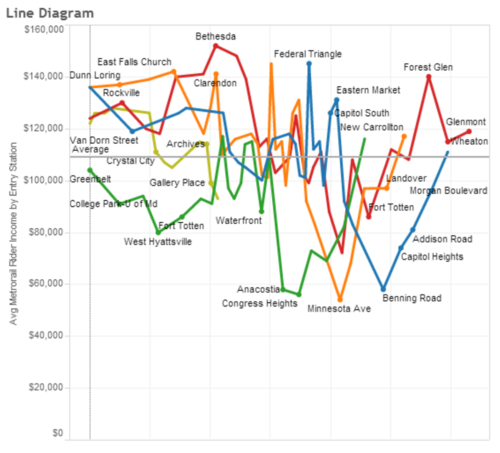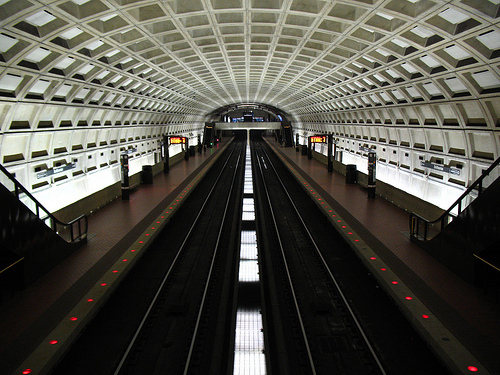Our region’s poor residents felt the Metro shutdown the most
When Metro shut down for 29 hours this week, some people had other options for getting to and from work. But many of the region’s low-income workers, who depend on transit more than others, were left in the lurch.
For anyone living or working in in our region, Tuesday’s news that the District’s metro rail system would close for a full 29 hours for an emergency safety investigation starting midnight Wednesday ignited an immediate firestorm of criticism.
To be clear, the safety of commuters and that of WMATA employees is absolutely paramount. If officials believed that the potential risks to riders and employees were grave enough to warrant an emergency shut down of the system, they were right to make the decision they did.
But an equally important conversation officials should be having is about the potential impacts of such mammoth service disruptions to the area’s most vulnerable populations, particularly low-income workers. After all, the ability to quickly absorb major disruptions in public transportation access—in other words, the ability to find alternative ways to easily and safely get to work, or to fulfill work obligations remotely — is in many ways its own form of economic privilege. And that seems to be lost on far too many.
As you think back to Wednesday, here are three considerations to keep in mind:
Public transportation users are disproportionately poorer than other commuters
Metro’s six rail lines serve an estimated 700,000 riders every day. And according to the US Census Bureau, and estimated 400,000people use mass transit in the Washington, DC region to get to work daily. Of course, for many, using public transportation is a matter of convenience. The ability to hop on the nearest bus or train and arrive at your destination with relative ease makes public transportation a more desirable option than dealing with excessive vehicle traffic or lack of reliable, affordable parking.
But public transportation can be an economic necessity for many commuters. And as one study finds, there’s a stark socioeconomic gap between those who use public transit and those who commute by other means in nearly every major U.S. city — including DC.
Using data from the American Community Survey, the study finds that the median earnings of public transportation commuters in the District is $45,771, compared to $51,469 among all DC commuters.

Image from Governing.com.
When it comes to public transportation, where you live makes a big difference
It’s a fairly intuitive concept: those living closer to downtown DC have more public transportation options readily available to them. Even a cursory glance at WMATA’s bus route map and Metrorail map make a strong case for this. So when access to rail is removed, those who live downtown are likely to have fallback transportation options at their disposal.
However, for commuters living further away from downtown DC or in neighboring Maryland or Virginia, public transportation options are often more sparse. So what happens when access to rail is completely removed in these regions?

The underground economy: DC’s richest and poorest Metro stops. Image from Washington City Paper.
Unfortunately, it means that many lower-income commuters — particularly households concentrated in southeast DC and portions of Maryland — are left scrambling to find affordable, reliable alternatives.
Think of it this way: a rail commuter living near Red Line’s Friendship Heights station (where median household income is among the highest in the District — $147,630, to be exact) can likely afford more expensive forms of transportation when access to rail is cut off, including a car, taxi, or ridesharing services like Uber and Lyft. So if the typical rider in this neighborhood were to suddenly need to arrange quick accommodations for an unexpected closure of the rail system, this likely wouldn’t present a heavy cost burden.
However, for a rider living near the Green Line’s Congress Heights station (where median household income is roughly $31,735), taking the bus may be the only remaining option to get to work or school, because other options are simply too expensive. And while bus fare is relatively affordable (and can be cheaper than metro rail fare), buses are often prone to unreliable service, longer station wait times, and longer commute times (full disclosure: this is largely based on my own personal accounts).
Importantly, excessively long commute times or unreliable forms of public transportation can create an additional set of problems for workers — especially those who cannot telework or who risk losing their job if they are even a few minutes late for their shift.
Which brings me to my third and final point.
For many low-income workers, the option to telework doesn’t exist
Shortly after the rail closures were announced on Tuesday, many federal workers in Washington, DC and the surrounding area were breathing a heavy (celebratory) sigh of relief because the Office of Personnel Management (OPM) announced that federal agency employees could take unscheduled leave or unscheduled telework.
But for many of the District’s low-income workers or workers who are employed in professions that require a physical presence (which include many low-wage hourly positions), the option to telework simply isn’t there.
Nearly 70 percent of low-income workers in America don’t have the ability to change their scheduled start or stop time if needed. Meanwhile, the ability for workers to change their schedule or to alter where they work is a privilege that is disproportionately reserved for high income workers. In fact, the higher a person’s income, the more likely they are able to change their schedule or work location.
In short, insufficient access to reliable public transportation can place workers in an extremely challenging situation: find transportation, or else risk losing your job. And when your job is your family’s economic lifeline, lack of adequate transportation can push workers to the brink.
As WMATA continues to work toward a safer, more reliable metro system, hopefully it keeps the District’s most vulnerable populations in mind.
This post originally appeared on Medium.



